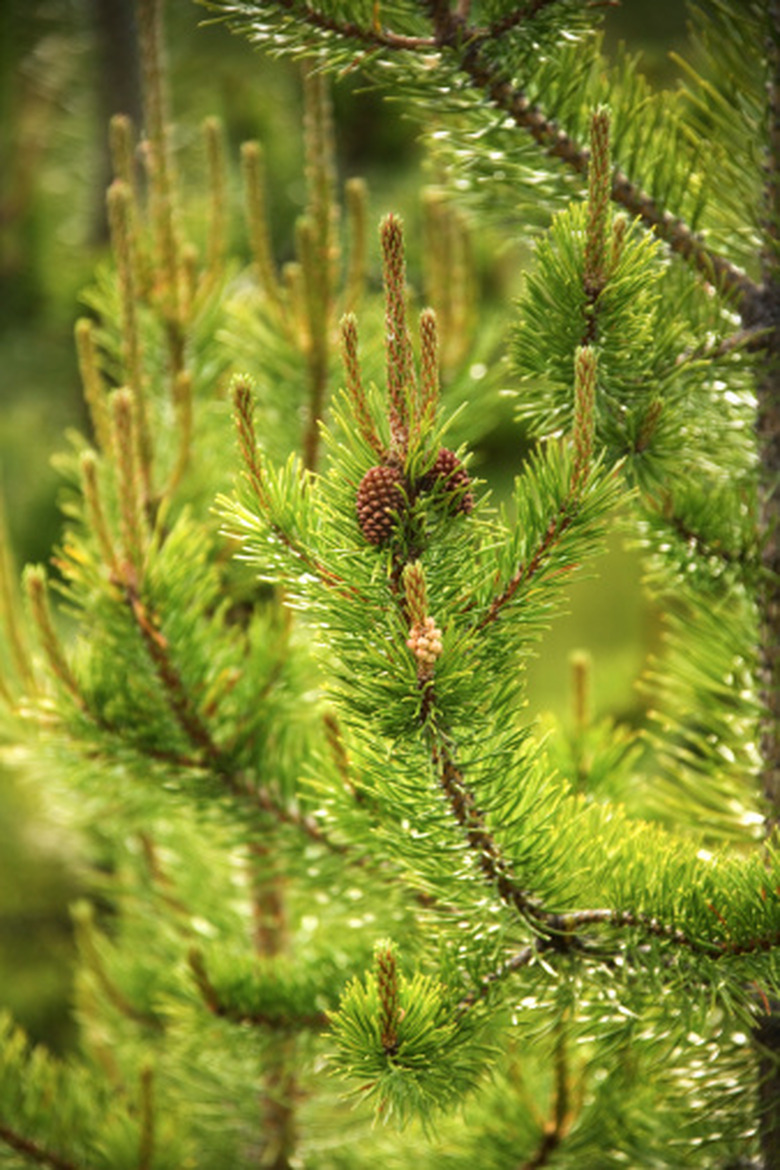Characteristics Of Pollination In Pine Trees
Pine trees are conifers — an evergreen plant group that bears cones. In spring, pines release a yellow cloud of pollen that coats cars and outdoor furniture and incites an allergic response in some individuals. A large quantity of pollen released into the air is a characteristic of pollination in pine trees.
Pine trees are conifers — an evergreen plant group that bears cones. In spring, pines release a yellow cloud of pollen that coats cars and outdoor furniture and incites an allergic response in some individuals. A large quantity of pollen released into the air is a characteristic of pollination in pine trees. Next time the air fills with pollen, look up at a pine tree and notice the different cones that take part in the reproductive cycle of these fascinating trees.
Description of Pine Trees
Approximately 100 species of pine grow throughout the world. Many are indigenous to northern locations, but some members, such as the Caribbean pine, thrive in tropical settings. Pines have whorled branches, woody cones and groups of needles that provide greenery yearlong. Pine trees are gymnosperms, a plant group that bears "naked seeds," or cones that are open to the environment, as opposed to seeds that are enclosed by fruit.
- Pine trees are conifers — an evergreen plant group that bears cones.
- Pine trees are gymnosperms, a plant group that bears "naked seeds," or cones that are open to the environment, as opposed to seeds that are enclosed by fruit.
Pine Cones
Pine trees bear female and male cones on the same tree. Male cones are smaller than female cones and develop in clusters on tips of low branches. The larger female cones develop higher in the tree than male cones. Botanically, a pine cone is a modified branch, and scales on the cone are modified leaves. In spring, male cones release pollen into the air, leaving a yellow dusting on outdoor surfaces.
Wind Pollination
Pine trees are wind pollinated. Examples of other wind-pollinated trees are spruce, fir, oak, ash and birch. Wind pollination is considered a primitive way of transferring pollen among trees. Whether a pollen grain reaches another tree is completely random. To increase chances of pollination, trees produce large amounts of pollen. There is greater success of pollination in trees that are grouped together.
- Pine trees bear female and male cones on the same tree.
Pollination in Pine Trees
Pollination in pine trees is the transfer of pollen from a male cone to a female cone, facilitated by wind. Pollen grains contain air sacs that help pollen stay airborne. A seed is formed when sperm nuclei, formed from the pollen, fertilizes an egg in the female cone. Pine cones mature after two years.
